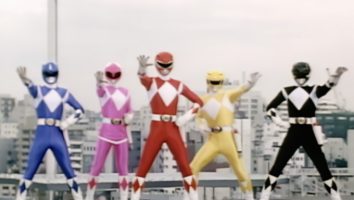All week we’re looking back at some of the biggest moves that have shaped the industry this decade. With the benefit of hindsight we’re able to see what has actually taken hold and had a ripple effect, and what has been stopped in its tracks. Today we’re looking at tech and what trends actually took off in the kidsphere.
Let’s take it back for a second to the year 2010: Instagram wouldn’t burst onto the scene until the end of the year, this new thing called the iPad had just been announced, and the first Gen Alpha baby was born on January 1. Little did we know, so many new inventions and ideas were going to launch over the course of the next decade. Some would take off and some would die before really taking flight (RIP Flappy Bird).
But there are several big moves in the tech space from the past decade, particularly in the kidtech space that held the attention of kids throughout the last 10 years.
YouTube Kids
The AVOD platform (pictured) launched its kids app in 2015 (first announced at Kidscreen Summit). But the kids-only walled-off garden may have been too little, too late. While it tried to coral kids into YouTube Kids (with adoption growing at a trickle rather than a flood), the Federal Trade Commission said that YouTube also actively courted big brands to its platform, including telling toyco Mattel that “YouTube is today’s leader in reaching children age six to 11 against top TV channels,” while Hasbro was told YouTube was the “number one website regularly visited by kids.” All of this might be true, and great for kids content makers on the platform—except that it led to a landmark US$170-million fine by the FTC and the New York Attorney General. This story is just going to keep developing as even earlier this week YouTube asked the FTC to loosen and clarify its COPPA restrictions on kids content creators.
Coding
It’s hard to trace back exactly when this trend started, but everyone in the kidtech space latched onto the coding craze. From apps (like Kano’s licensed Disney apps) to TV shows (The Industrial Brothers and The Jim Henson Company’s Dot.), everything became about teaching kids to code. That’s not to mention several initiatives like Mattel’s partnership with Tynker to teach 10 million kids to code by 2020 and Cartoon Network rolling out We Bare Bears and Craig of the Creek coding games and toys. We even dove into the phenomenon to see if kids were actually going to learn anything from all of these efforts.
Pokemon GO
Who would have thought an interactive app would bring hoards of people to the street looking at their phones in clusters trying to catch little digital creatures? But not only did Pokemon GO take hold of everyone for a few months when it launched in the summer of 2016, it also managed to have staying power, earning US$176 million in August of this year, according to Forbes. Even though augmented reality was around before, this one app led to an explosion of copycats, with everyone from Dr. Seuss to Harry Potter jumped on board.
Tablets
Long before Apple TV+ was thought in consumers’ minds, on April 3, 2010, Steve Jobs got on a big flashy stage in California and introduced the world to the iPad. Tablets had been kicking around in some form or other for a few years, but this event pushed usage into the hands of regular people. Now, kids are basically little touch screen addicts and you’d be hard pressed to find a kids property that doesn’t have a tablet app of some kind.
Amazon Alexa
“Alexa, who are you?” Amazon’s voice assistant technically launched in 2014, but it wasn’t until around late 2016/early 2017 when it began to enter more into the public consciousness. Around the same time (November 2016, to be precise) Google launched the Google Home and suddenly developers started to take notice that the future was probably voice activated. And many kids brands hopped on board, including Sesame, Nickelodeon and Disney. UK research firm Childwise reported earlier this year that there’s been an increase in the amount of kids embracing voice-recognition features of their tech, with 31% using them in 2019, up from 27% in 2018.
Nintendo Switch
With smartphone ubiquity, it’s no wonder free games took hold of the app stores, making gaming suddenly widely accessible to all. The catch: It’s incredibly difficult to make money when there’s a free alternative on the market (who’dve thunk), spelling bad news for makers kids console games. But then the Nintendo Switch came along in March 2017 and boosted the entire US video game market across both hardware and software sales to the biggest numbers it had seen that decade. In fact, the handheld device just had its best week of US sales ever, last week.
The not-Facebook effect
Like it or not, kids decide what is cool for the rest of us on the internet. So they were all over Facebook at the beginning of the decade, but by the time Facebook brought out its Messenger Kids app, they weren’t really interested anymore. Kids had moved on to Snapchat and then TikTok. But that hasn’t stopped several kidcos from trying to launch the next great kids social media, including LEGO and BBC.





















